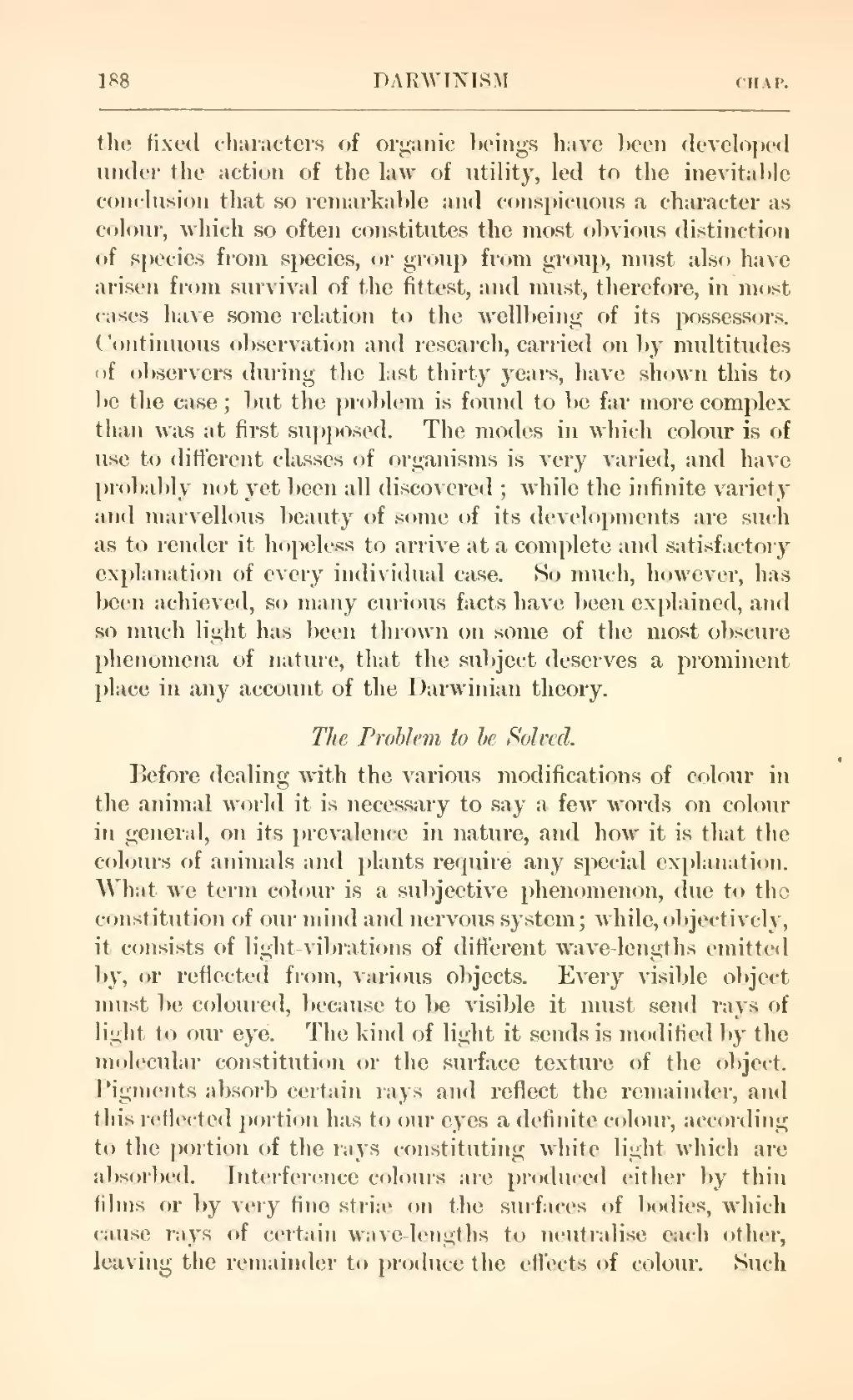the fixed characters of organic beings have been developed under the action of the law of utility, led to the inevitable conclusion that so remarkable and conspicuous a character as colour, which so often constitutes the most obvious distinction of species from species, or group from group, must also have arisen from survival of the fittest, and must, therefore, in most cases have some relation to the wellbeing of its possessors. Continuous observation and research, carried on by multitudes of observers during the last thirty years, have shown this to be the case; but the problem is found to be far more complex than was at first supposed. The modes in which colour is of use to different classes of organisms is very varied, and have probably not yet been all discovered; while the infinite variety and marvellous beauty of some of its developments are such as to render it hopeless to arrive at a complete and satisfactory explanation of every individual case. So much, however, has been achieved, so many curious facts have been explained, and so much light has been thrown on some of the most obscure phenomena of nature, that the subject deserves a prominent place in any account of the Darwinian theory.
The Problem to be Solved.
Before dealing with the various modifications of colour in the animal world it is necessary to say a few words on colour in general, on its prevalence in nature, and how it is that the colours of animals and plants require any special explanation. What we term colour is a subjective phenomenon, due to the constitution of our mind and nervous system; while, objectively, it consists of light-vibrations of different wave-lengths emitted by, or reflected from, various objects. Every visible object must be coloured, because to be visible it must send rays of light to our eye. The kind of light it sends is modified by the molecular constitution or the surface texture of the object. Pigments absorb certain rays and reflect the remainder, and this reflected portion has to our eyes a definite colour, according to the portion of the rays constituting white light which are absorbed. Interference colours are produced either by thin films or by very fine striae on the surfaces of bodies, which cause rays of certain wave-lengths to neutralise each other, leaving the remainder to produce the effects of colour. Such
